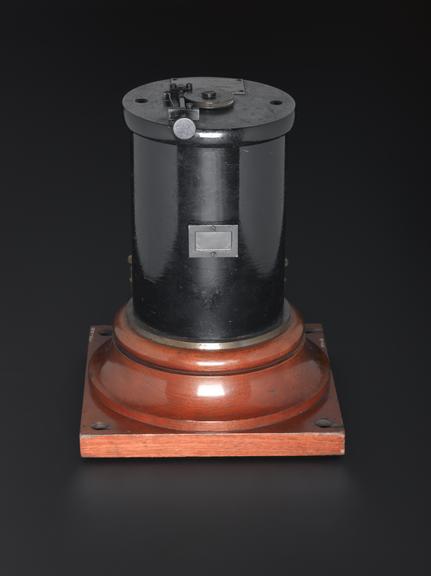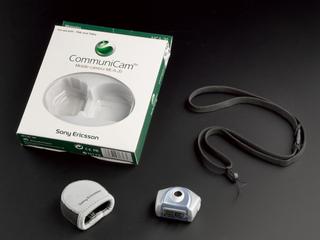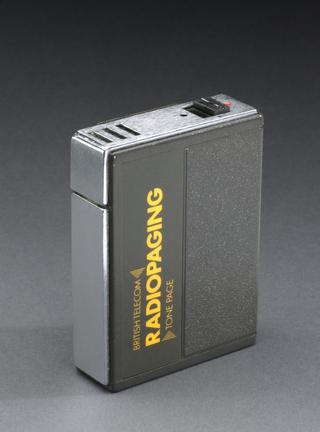
William Thomson's marine mirror galvanometer, 1850-1900








William Thomson's marine mirror galvanometer, made by Siemens and Halske, Berlin, Germany, 1850-1900.
The mirror galvanometer was invented by William Thomson (later Baron Kelvin of Largs) and patented in 1858. It is a particularly sensitive electrical indicating instrument and was used to detect the extremely weak currents received through long submarine cables. Instead of a needle indicator, a mirror with a bar magnet cemented on the back is suspended on silk threads within the coil. A beam of light shone on the mirror is reflected on to a scale card some distance away, thus magnifying any movement of the mirror. Instruments of this type were used on the Atlantic cable expedition of 1858. The mirror galvanometer became the standard instrument for receiving telegraph messages, but it did have a disadvantage in that it needed two operators - one to read and call the signal, and another to write the message down. This example was made for use on board ship. The delicate movement is inside a strong iron case to eliminate any magnetic disturbances from outside.
Details
- Category:
- Telecommunications
- Object Number:
- 1970-63
- Materials:
- metal (unknown), glass, copper (alloy), wood (unidentified) and plastic (unidentified)
- Measurements:
-
overall: 340 mm x 255 mm x 255 mm, 24 kg
- type:
- galvanometer
- credit:
- Donated by GEC-AEI Telecommunications Limited




